How To Build The Perfect Interior Design Portfolio
Maybe you had such a great time redesigning your home, you’ve started to think about perhaps offering the service to other people. Maybe you’re in school for design and are starting to think about what your career could look like as a post-grad. Maybe enough people have requested your guidance with their own styling that you’re thinking of making it a business. It might be time for you to put together an interior design portfolio.
What You’re Going To Need
Before & After Photography
Sure, some well-staged and high-quality photos of spaces you’ve designed are important to sell a client on your services. But unless you also include a “before” photo in there, they aren’t going to understand the scope of your work. For all they know, you could have walked into a room that had great structure and you just had to add a few accessories. Though that could sometimes be the case, the most convincing sell is going to show a client what you could potentially do to their home and how no space is unfixable.
Writing About Your Process
Next, your client is going to want to be assured that you’re someone they’ll want to work with and that your style works well with theirs. Open by telling them how you collaborate or what your step-by-step process will look like. Be detailed! Tell them everything that will happen between you from the time you first connect to the day your home is finished.
Clients You’ve Worked With, Or Reviews
Though your own words are going to be important, you’ll want to share the words of those who have been happy with your work. If you haven’t had any clients yet, ask to renovate a friend’s space for free in exchange for a review.
Technology
If you’re going to put together a portfolio, consider doing it digitally. Either start a website or use Google Slides to share your work with a potential client. If they reach out to you via that site or social media, you should be able to easily link them to examples of your work which they can scroll through at their leisure. The more integrative and technologically savvy you seem, the more convincing you’re going to be. In addition, having tools like an iPad on which you can sketch, draw, or show your work will help you look as professional and polished as possible.
What Makes For A Good Portfolio
How do you know whether or not your portfolio is good enough? Well, it’s hard to say, given that portfolios aren’t usually very public things. Of course, you can do your research and look at the websites of other designers, but that isn’t going to give you all of the information you need. The following will help you stay on track.
View The Portfolio From Your Client’s Perspective
Remember, you don’t just want to tell them that your work is very good. You want to imagine what the process is like from their perspective, and speak to that. Talk to them about what their goals might be and how you will help achieve them.
Talk About Your Methods & Tools
Is there a certain site you use for color palettes? Where do you get inspiration? How do you begin laying out a redesign? Your client is going to want to know everything they can about what your process looks like so they feel more comfortable and prepared for it.
Address Challenges
Gather the most common concerns and try to address them right away. Talk to them about how pricing works and how they are billed. Talk about how they can have a collaborative role in making decisions about their home or whether they’d like to fully hand the reins to you.
In other cases, talk about how you handled challenges in past projects. Did you have nonviable plumbing that wasn’t in the budget to fix? Did you work with a foreman or construction company to resolve the problem? Explain how you went above and beyond to get the issue fixed and the project back on pace.
Show The Styles You Do Best With
As a designer, it’s your job to do any type of style, but you’ll want to identify your niche and stick to it. The number of clients you may not get because you are known for your Mid-Century Modern kitchens is going to pale in comparison to the number that will seek you out because they want someone who specializes in what they really want.
So be honest with your potential clients. It’s not worth the headache and the result of them not being totally satisfied because you weren’t completely transparent about your strengths and weaknesses. It’s about making sure both of you are the right fit.
Pricing
Of course, make sure that your prices are clear and easy to understand. Instead of a flat rate, explain what that rate entails, how it breaks down, and so on. Also consider offering alternative packages and plans for people who may want to use your services but cannot afford your most premium.
Putting It All Together
Remember to think in terms of visuals and transformations.
As a designer, everything from your business cards to your website to your physical appearance should reflect your work. You are selling yourself as an expert in taste and style, so you really want to communicate that in every part of yourself as a package.
In addition, keep in mind that the average individual isn’t looking to hire you to create a showroom for them. They’re looking to you to transform a room in which they feel totally stuck and at a loss. You have to prove to them that you can see potential where other people can’t and that you can come to a solution that makes everyone happy.
Lastly, even if your portfolio is based on the web, ensure that you have a PDF file that you can easily email to people so that they can share it with their partners, friends, or family if they’d like. You want to make it as easy as possible for people to not only see and understand your work, but to show it to others, too.
Interior Design Portfolio Examples
To give you a little more inspiration for your own portfolio, here are some of our top picks for the best interior design websites around.
Abbie Naber — Naber Design
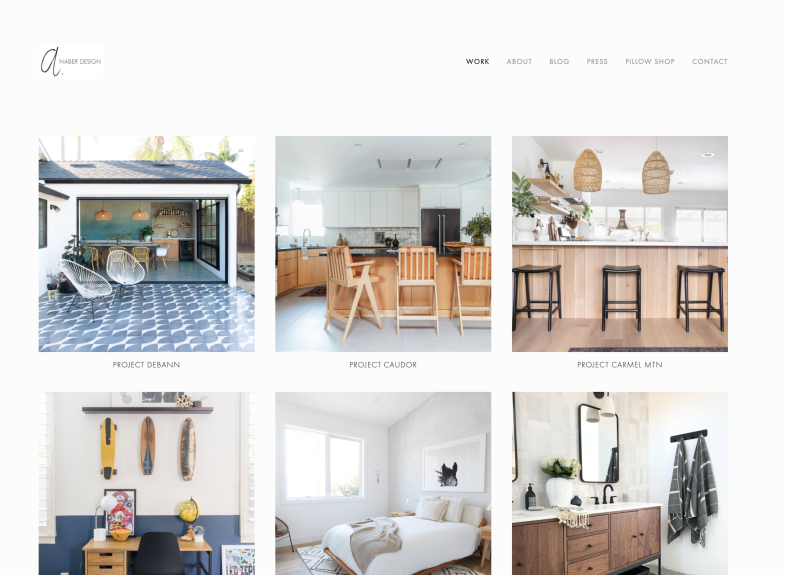
Abbie’s site is clean, easy to navigate, and immediately shows you images of the rooms she’s created in different styles. When you select which room you’d like to see, there are clear, up-close images that show you her tastes, and it’s clear that while she’s versatile, her niche is Mid-Modern, Modern, and Transitional with a touch of Western.
Michelle Gage — Michelle Gage Design
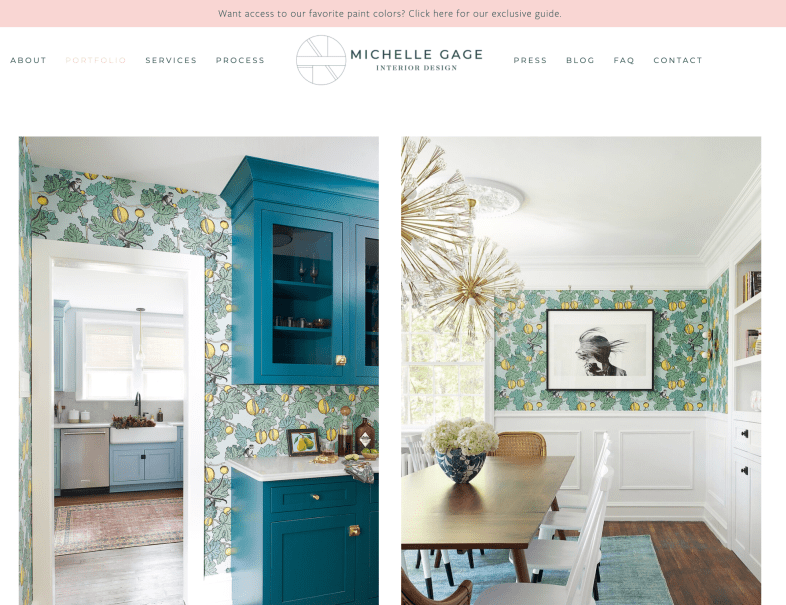
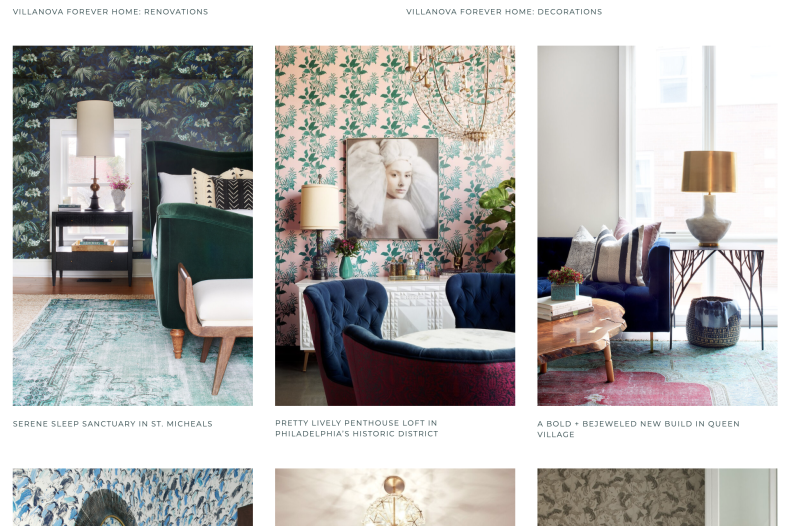
Michelle has a fantastic logo and immediately shows the viewer her taste for color and attention to detail. It’s obvious that Michelle specializes in unique, carefully put-together homes, and the type of client that would be most interested in her services should resonate with these images immediately.
Claire Staszak — Centered By Design
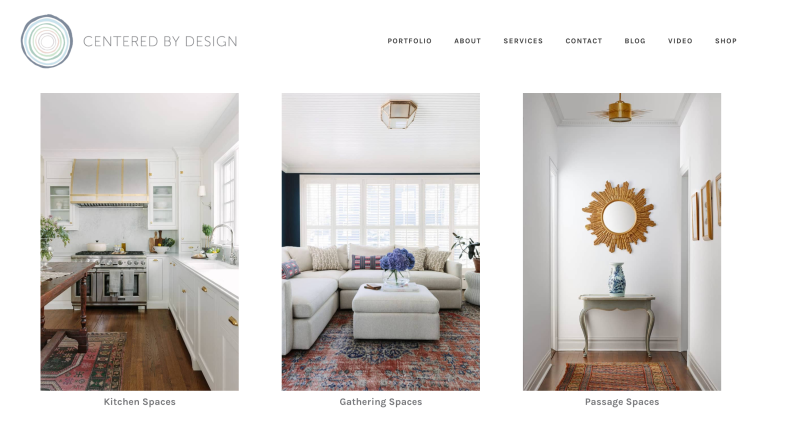
Claire’s site is also easy to navigate, and each photo allows you to enter a gallery in which you can view the rest of the home. She shows off her versatility while still focusing on Mid-Modern and Transitional homes, with touches of Rustic and Traditional elements, too.
Anna Smith — Annabode
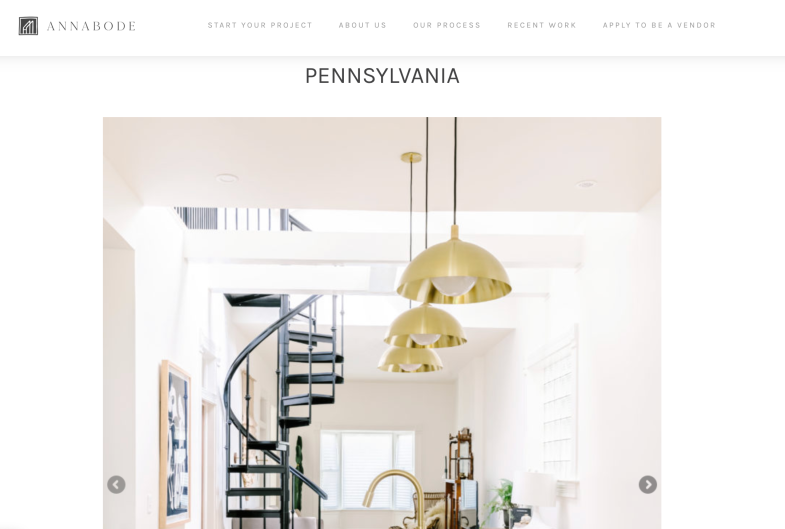
Anna makes it immediately apparent that her work is sleek, streamlined, extremely well pieced together, and certainly unique. By organizing her work into a lateral grid with examples from different locations, she shows off one space at a time so you can see and appreciate all of the thought that goes into designing a simple space.
–
Though there’s certainly merit in studying interior design, remember that many designers get their start from their own homes. When putting together your portfolio, your objective is essentially to sell a potential customer on why you’d do a great job with their space. Don’t try to compensate or justify why you are or aren’t qualified. Simply present your work as though you have confidence that you are.





